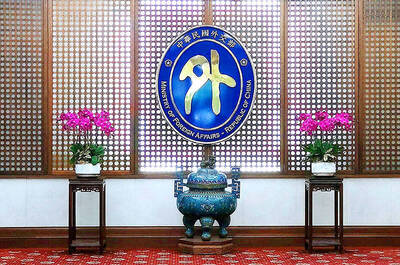Recent media interest about new types of submarines being developed by the People’s Liberation Army Navy (PLAN) could provide important clues about China’s naval capabilities and intentions, a specialist on China said in a recent article.
“Whereas the development and deployment of the Chinese navy’s surface fleet have been prominently displayed in unprecedented scale in recent naval exercises both in the South and East China Sea, the expansion of China’s subsurface fleet appears to have been slowed in recent years,” Russell Hsiao, editor of the China Brief, a publication of the US-based Jamestown Foundation, wrote in the publication’s latest edition.
From 2007 until this year, he said, the total number of submarines deployed in the PLAN was steady, rising by a single vessel, to 63, Hsiao wrote.
While the scope of the PLAN’s development remained to be seen and would depend on tested capabilities rather than media photos and speculation, the increased incidence of reports on new submarines could nevertheless provided important clues about Beijing’s strategic outlook, he said.
“In this context, these reports raise interesting questions about what is known regarding the pace of investments that China has undertaken to increase stealth, missile capacity, survivability and the capability to project its submarine force both regionally and globally,” he wrote.
Early last month, a Hong Kong-based media ran a story based on a photo of a new conventionally powered attack submarine that had been circulating on the Web for several weeks. The SSK submarine was allegedly developed by state-owned China Shipbuilding Industry Corp, China’s largest shipbuilder, the report said.
The People’s Liberation Army (PLA) has yet to officially acknowledge reports that the new submarine has stealth capabilities.
“Chinese academic engineering literature cited by a prominent Western defense magazine supports the fact ‘that the PLA has also been researching fuel cell AIP engine technology — with the PLA having benefited via Chinese academics from several conferences with German fuel cell technology experts,” the report said, citing Jane’s Defense Weekly.
“The addition of an AIP system could allow a Chinese submarine to operate underwater for up to 30 days on battery power, and would make the Song and Yuan submarines inaudible to existing US surveillance networks-and US subs,” the report said.
Reports also claim that China would finish testing and deploy two additional Yuan-class submarines by the end of next year, Hsiao wrote, adding that if reports were true, it would confirm the belief, held by some experts, that the apparent slowdown in the PLAN’s expansion was only a transitory phase and that its submarine fleet appeared set to resume its upward trajectory.
These revelations coincide with the recent sighting of a new Type 093 Shang-class nuclear-powered attack submarine docked at a Chinese naval base in Sanya, on Hainan Island. A photograph obtained by Japan-based Kyodo News showed two nuclear-powered submarines docked at a quay on the base.
Hsiao wrote that the reports and images showcasing new submarines and deployments underscored Beijing’s growing assertiveness, which has also been accompanied by an increasing incidence of sorties and exercises in waters close to Taiwan, Japan and South Korea.

The Ministry of Foreign Affairs (MOFA) yesterday voiced dissatisfaction with the Comprehensive and Progressive Agreement for Trans- Pacific Partnership (CPTPP), whose latest meeting, concluded earlier the same day, appeared not to address the country’s application. In a statement, MOFA said the CPTPP commission had "once again failed to fairly process Taiwan’s application," attributing the inaction to the bloc’s "succumbing to political pressure," without elaborating. Taiwan submitted its CPTPP application under the name "Separate Customs Territory of Taiwan, Penghu, Kinmen and Matsu" on Sept. 22, 2021 -- less than a week after China

ALIGNED THINKING: Taiwan and Japan have a mutual interest in trade, culture and engineering, and can work together for stability, Cho Jung-tai said Taiwan and Japan are two like-minded countries willing to work together to form a “safety barrier” in the Indo-Pacific region, Premier Cho Jung-tai (卓榮泰) yesterday said at the opening ceremony of the 35th Taiwan-Japan Modern Engineering and Technology Symposium in Taipei. Taiwan and Japan are close geographically and closer emotionally, he added. Citing the overflowing of a barrier lake in the Mataian River (馬太鞍溪) in September, Cho said the submersible water level sensors given by Japan during the disaster helped Taiwan monitor the lake’s water levels more accurately. Japan also provided a lot of vaccines early in the outbreak of the COVID-19 pandemic,

THE GOOD WORD: More than 100 colleges on both sides of the Pacific will work together to bring students to Taiwan so they can learn Mandarin where it is spoken A total of 102 universities from Taiwan and the US are collaborating in a push to promote Taiwan as the first-choice place to learn Mandarin, with seven Mandarin learning centers stood up in the US to train and support teachers, the Foundation for International Cooperation in Higher Education of Taiwan (FICHET) said. At the annual convention of the American Council on the Teaching of Foreign Languages held over the weekend in New Orleans, Louisiana, a Taiwan Pavilion was jointly run by 17 representative teams from the FICHET, the Overseas Community Affairs Council, the Steering Committee for the Test of Proficiency-Huayu, the

A home-style restaurant opened by a Taiwanese woman in Quezon City in Metro Manila has been featured in the first-ever Michelin Guide honoring exceptional restaurants in the Philippines. The restaurant, Fong Wei Wu (豐味屋), was one of 74 eateries to receive a “Michelin Selected” honor in the guide, while one restaurant received two Michelin stars, eight received one star and 25 were awarded a “Bib Gourmand.” The guide, which was limited to restaurants in Metro Manila and Cebu, was published on Oct. 30. In an interview, Feng Wei Wu’s owner and chef, Linda, said that as a restaurateur in her 60s, receiving an